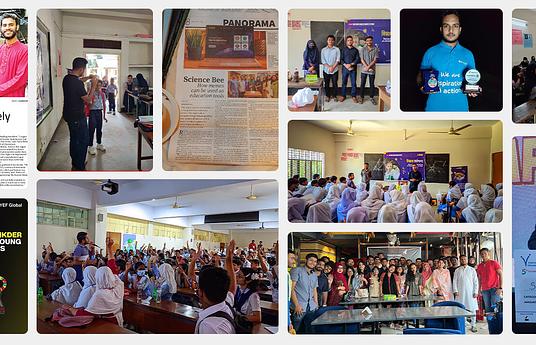A climate playground provides an answer to various challenges that come with climate change. It was important to consider the heat stress caused by abundant sunshine on a bare concrete surface. Planting trees, native greenery and limiting concrete surface will provide shade and coolness over time. We wanted to bring our kids in contact with nature again and make them guardians for the future.
Our design chose monkey-proof materials such as robinia wood and other robust materials. More than 40 trees and over 150 shrubs were planted in a varied landscape where natural materials such as sand and gravel play an important role. Sports fields were also laid out throughout the nature-rich areas so that both large and fine motor skills are stimulated. Clear walking lines, well thought-out layout and bold choices regarding planting, adventurous and risky play now provide a fantastic playground for children. As teachers, we notice that bullying has disappeared from our playground. Our children are less bored. We see a wonderful variety of play forms and we have countless opportunities for outdoor learning. Our children learn to care for animals and plants and learn about healthy eating and recycling. For example, there is a vegetable garden with greenhouse, we keep chickens and bees and we have our own recycling park.
The transformation of the playground started from the children and the teachers but soon overtook the school. The city of Kortrijk became involved and was the first to come up with, limited, financial resources. Then the regional authorities jumped on board. Since then, our project has been seen as an example and more than 300 schoolyards have been designed in this way in Flanders. The school is also the founder of BLES. A service that now supports schools at home and abroad in designing natural schoolyards. Teachers from the school travel around the world to talk about these projects, thereby bringing schools into action. So far they have collected over 4 000 000 euro to change school grounds an inspire schools to take their teaching outdoors.
We have developed a proven concept in which we bring together a solid network of educational experts, landscape designers and project managers in the schools in order to smartly depave and green the schoolyards from a whole school approach and with a sustainable view of the process. We look for solutions for water collection and use and integrate all this into a futureproof view of education.


.jpg)
